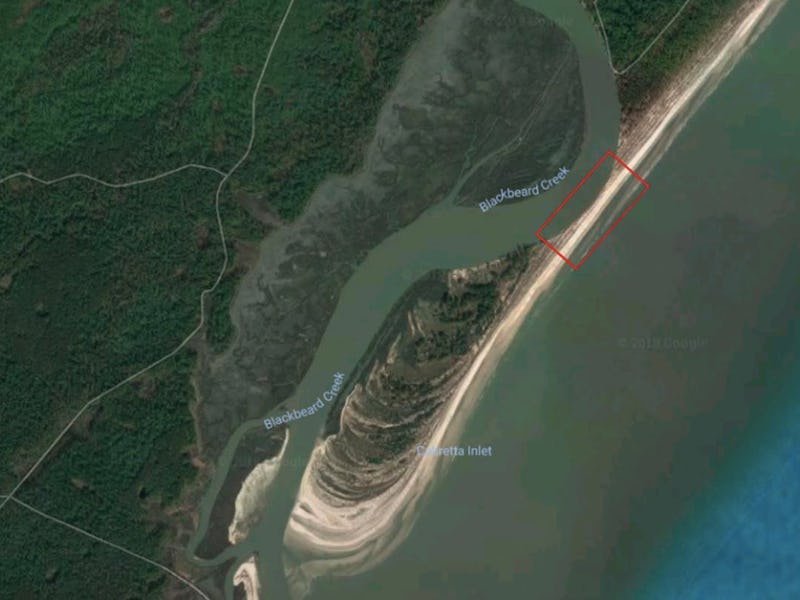By Forcing Nature's Hand, Hurricane Irma Created a Whole New Island
Little Blackbeard would definitely have emerged, but not this quickly.

Blackbeard Island is a national wildlife refuge off the coast of Georgia, populated by critters like bald eagles and loggerhead sea turtles. The island’s namesake is none other than Blackbeard the pirate, because of rumors that he’d retreat to the island for “banking” purposes. You would think that the most exciting thing on the island’s record would be an infamous pirate using it as a stowaway for gold, but this fall, nature proved itself once again to be the most powerful force: Hurricane Irma swept across the Gulf Coast and set in motion the creation of a whole new island off of Blackbeard Island.
The hurricane, the strongest Atlantic basin hurricane ever recorded, hit Georgia’s coast on September 12, and by September 28 researchers from the University of Georgia’s Center for Geospatial Research were able to capture drone footage of the new island created. At 100 acres, it’s picked up the nickname Little Blackbeard.
In an interview with the Athens Banner-Herald, UGA geography expert Marguerite Madden Ph.D., explained that Little Blackbeard is a result of the storm accelerating an otherwise natural process.
The arrow points to a strip of land that split to form Little Blackbeard.
Prior to Irma’s landing, a narrow finger of land reached down from Blackbeard Island towards the neighboring Sapelo Island. This strip of land had emerged over time because of the direction of currents off Georgia’s coast. Georgia has two sets of barrier islands boarding its coast, and the shape and size of these landforms constantly change because wind, waves, and tidal currents redeposit sediments and cause erosion.
This natural process led to the formation of the narrow spit of land — Hurricane Irma then blasted in, speeding up the process of erosion. Whether or not Little Blackbeard will be able to stand the test of time remains to be seen. Madden says there’s a chance that changing currents will eventually cause it to attach to Sapelo Island, or continued erosion paired with the redepositing of sediments could cause it to disappear altogether.
“These areas are very dynamic because it’s sandy,” Madden told FOX 13. “It’s not unusual. Storms can cause dramatic changes in a short amount of time.”
Drone footage of Little Blackbeard taken by Tommy Jordan and Marguerite Madden.
Storms historically can make islands appear or disappear. According to the United States Geological Survey overwash, the flow of water over coastal dunes can be one of the most damaging effects of storms, accelerating the rate of coastal erosion. Storms can also deposit huge quantities of sand, prompting the formation of islets. In April 2017, a new island emerged off the coast of North Carolina, exemplifying this natural process of depositing sand and changing currents, revealing whale bones and shipwreck ruins.
Little Blackbeard hasn’t revealed any treasure yet, but with the ever-changing nature of coastlines, it’s too soon to say anything is impossible yet.
The island of Ta’u is now completely solar-powered thanks to Tesla and SolarCity.